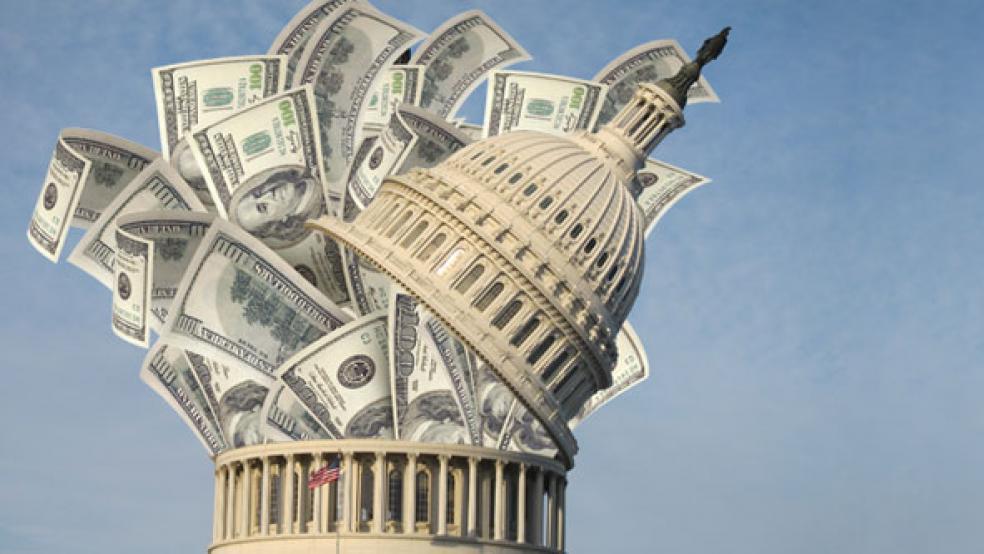During the bitter conflicts between the Obama administration and congressional Republicans over raising the national debt ceiling in 2011 and 2013, Treasury Secretary Jack Lew warned it would seriously harm the economy to cancel the government’s borrowing ability, forcing the Treasury to choose what bills and obligations to pay.
The Republicans argued that the government could temporarily “prioritize” the most essential spending – such as for defense, veterans benefits and Social Security—while the administration and lawmakers resolved major budget disputes. But Lew insisted that such as scheme was highly dangerous, and that Republicans were inviting a calamity by allowing a first-ever default on U.S. borrowing.
Related: The Next Debt Crisis Could Be Much Worse than in 2013, GAO Warns
During an October 2013 appearance before the Senate Finance Committee, Lew warned Congress against a “manufactured crisis” over the debt ceiling in Washington. He added that prioritization was “default by another name” and that it would cause “irrevocable damage” to the economy and the government’s credit rating.
But a detailed report by the House Financial Services Committee released this week charges that Lew and the administration misled Congress and the public about the inherent risks of temporarily prioritizing spending once the debt ceiling was breached.
Indeed, the administration had actually run “tabletop exercises” to prepare for such a contingency, according to the Republican-controlled committee’s findings. One of those exercises included an hour-by-hour simulation of how 29 government agencies and the markets would react.
And the Federal Reserve Bank of New York had previously made plans to prioritize Social Security, veterans’ benefits and principal and interest payments on the debt over other government obligations, according to the report.
Related: Let’s Finally Debate the Greatest Threat to America: Our $18.9 Trillion in Debt
Committee investigators discovered through subpoenaed documents that the Federal Reserve and the New York Fed objected to the administration’s attempts to keep its contingency planning under cover. In one email obtained by the committee, Fed officials described the administration’s secretive planning as “crazy, counter-productive, and add[ing] risk to an already risky situation.”
Another internal email from the Federal Reserve Bank of New York complained, “Treasury wants to maximize pressure on Congress by limiting communications about contingency planning,” according to the report.
“These internal documents show the Obama Administration took the nation’s creditworthiness and economy hostage in a cynical attempt to create a crisis so the President could get what he wanted during negotiations over the debt ceiling,” House Financial Services Chairman Jeb Hensarling (R-TX), said in a statement. “The Administration owes it to the American people to be honest and transparent about its debt ceiling contingency plans.”
The report marks the latest chapter in a long-running feud between the Obama administration and congressional Republicans over handling of the federal debt ceiling.
The two sides have had sharp differences over whether it would make a huge difference if the government’s borrowing authority were allowed to expire temporarily. The House last October passed a bill to prioritize debt payments in the event the Treasury defaults, but the measure never reached President Obama’s desk.
Related: Boehner’s Last Stand — A Budget Deal That Raises the Debt Ceiling
In May 2014, a senior aide to Lew admitted in a letter to Hensarling that the government was “technically capable” of prioritizing payment if Congress triggered a debt crisis.
Treasury officials on Tuesday sought to play down the significance of Hensarling’s committee report and suggested that many of the findings were old news.
“Only Congress can raise the debt limit and the alternative is default,” a Treasury spokesperson said in a statement. “As the Treasury Department has explained on numerous occasions, due to the brinkmanship that led our country to the edge of default in 2011 and 2013, Treasury has been forced to consider a range of options with respect to how it would operate in the unthinkable event that Congress fails to raise the debt limit.”
“While Treasury has viewed the option of delaying payments as the least harmful option in this catastrophic scenario, make no mistake – this would still be default,” he added. “Thankfully, no decision has ever been necessary because Congress has always acted to raise the debt limit.”
Related: What a Debt Ceiling Disaster Could Mean to You
The debt ceiling is a legislatively enforced limit on how much the Treasury may borrow to pay debts already incurred by the government. While Republicans and Democrats alike have used the debt ceiling as a political football in budget battles to try to block future spending, it actually reflects spending already approved by Congress and the president. The debt ceiling – reflecting the nation’s accumulated national debt -- surpassed $19 trillion late last month.
The Treasury traditionally has coped with prolonged conflicts over raising the debt ceiling by imposing “extraordinary measures” which have allowed the government to continue temporarily making all payments in full and on time. But the administration has drawn the line at allowing the Treasury to lapse into default on its borrowing.
Since a near default in the summer of 2013 that caused an economic uproar and triggered a downgrade of the government’s credit rating by Standard & Poor’s, President Obama has insisted that the debt limit was non-negotiable, and that any delay in renewing the government’s borrowing authority could seriously damage the economy.





